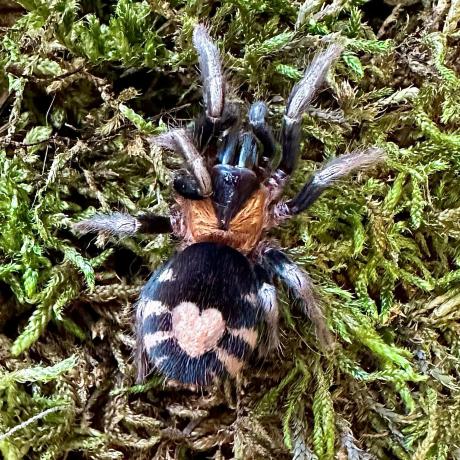

Cyriocosmus elegans also known as a Heart Butt tarantula is a stunning little fast growing fossorial species, which can reach maturity in as little as a year and grows no larger than 5cm legspan.
| Origin | Trinidad and Tobago |
|---|---|
| Enclosure Style | Arboreal |
| Temperature | 20-26°C |
| Humidity | 70-80% |
| Legspan | 5cm |
| Temperament | Docile but tiny - Beginner |
Trinidad Dwarf Tarantulas, also commonly known as ‘Heart Butts’ have a unique mirror patch in the shape of a golden heart, they have tiger stripes on their abdomen, and a rich orang-brown carapace with a glossy black triangle at the front. They grow to around 5cm for females, smaller for males at around 3-4cm.
They are found in tropical areas of Trinidad and Tobago, with high humidity and moist ground conditions where they create burrows.
Keep these tarantulas in a terrestrial setup, approximately 5x the leg span of the spider. Keep the substrate fairly deep to allow for burrowing and at around 70-80% humidity. Spiderlings will feed on Micro Crickets and Fruitfly, moving up in size as the tarantula grows. As a rule, offer food the same size as the abdomen to ensure the prey is not likely to overpower the tarantula. Feed 1-2 times per week, around 1-2 insects, and any uneaten food must be removed after 24 hours to minimise any risk if the tarantula is due to moult. Feeder insects can pose a threat to a vulnerable moulting tarantula.